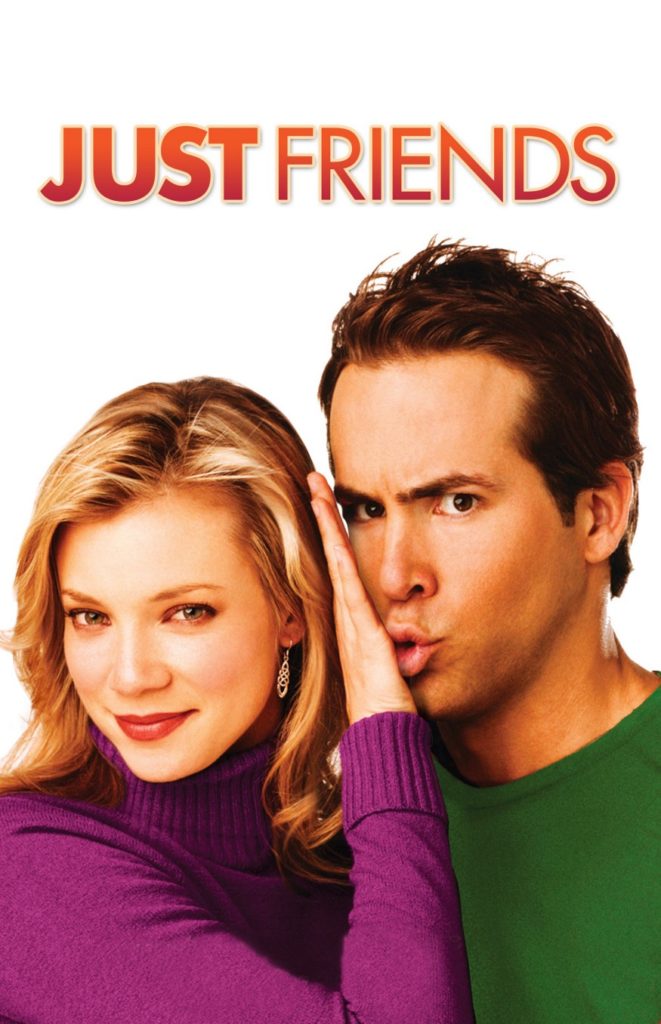Staff Picks: Christmas 2020 Edition
Originally posted December 24, 2020
Every year- and especially in times like these- we rely on three main things to really get us into the holiday spirit: family, music, and film. This year, in light of the pandemic and the inability to gather with our loved ones, a few of our staff members reviewed their favorite holiday films with the hope of recreating some of the sentimentality that reminds us of home.

The Family Stone (2005)
This movie is a staple in my home every year. Like slipping on your favorite Christmas sweater, The Family Stone is a film sure to make you feel like you’re coming home for the holidays. Revolving around a slightly dysfunctional family rich with diverse personalities, the film really gives you a warm, comforting feel, while also exhibiting often relatable family holiday squabbles. The juxtaposition between the sentimentality and complication of family holidays can feel especially familiar for some, and not everyone will enjoy the attitudes of the family in general. However, there’s something to be said for traditionally unlikeable characters- or characters with unlikeable tendencies- that can inspire emotion and empathy from the viewer, and despite the Stone family’s seemingly high opinion of themselves, this cast manages to convey that.
As far as diversity itself goes, The Family Stone does make a valiant attempt. The film gives us a female main character in Meredith (Sarah Jessica Parker), who shines with uncomfortable hilarity as her uptight personality clashes with their unconventionality. The Stones do have a deaf son, Thad (portrayed by actual deaf actor Tyrone Giordano) who is in a relationship with Patrick (portrayed by Black actor Brian J. White). Their chemistry is believable, although they’re only minor characters in a star-studded but primarily white and straight cast. Also notable are Diane Keaton, Craig T. Nelson, Rachel McAdams, Dermot Mulroney, Elizabeth Reaser, and Luke Wilson as Stone family members Sybil, Kelly, Amy, Everett, Susannah, and Ben, respectively. Claire Danes also stars as Meredith’s sister Julie, who incidentally also ends up spending Christmas with the Stone family.
Giordano did spend 3 weeks with his cast members to teach them ASL (American Sign Language) before filming, and while Thad can and does read lips in the film, the Stone family often signs when they speak as well. Giving a member of the deaf community the opportunity to teach their coworkers personally the signage for their film is a huge positive for inclusion, makes it more likely that the portrayal is accurate and fair, and is something meaningful for the audience to enjoy.
Overall, it’s a personal favorite Christmas movie and I recommend giving it a watch around the holiday season. I’ve given The Family Stone a movie score of 4.5 stars. The film earns an Incluvie score of 4 stars from me, for having a woman as the main character, and for the well-intended inclusion of a deaf man and a POC in a mature queer relationship.
- Sydney H.

Just Friends (2005)
Every holiday season, I make sure to watch this original Christmas classic. Both equally comedic and equally festive, Just Friends manages to get me in the holiday spirit every year. Centered around a former overweight young man turned womanizer, the film presents friendship, a slow-burn romance, and Christmas destruction. The dysfunctional relationship between the two leads may be relatable to some — stuck in the friend-zone, knowing you may never escape the unrequited love. Setting the film around the holidays call for happiness and cheer, but not for everyone. Although surrounded by the brightest lights and decorations, the main character could not be in a darker state.
In terms of diversity, Just Friends lacks it entirely. There is little to no effort to incorporate underrepresented groups in the story. The film does include a brief scene that reveals an LGBTQ+ relationship, but it is over within two seconds. Also, the film does give us female characters, although in supporting roles. Jamie Palamino (Amy Smart) acts as the love interest of Chris Brander (Ryan Reynolds)- though they have tons of history, there isn’t much regarding her character. The most memorable and quotable character in the entire film is Samantha James (Anna Faris). Although she is egotistical and irritating, Samantha James remains one of the most iconic and hilarious characters in the movie. Though her portrayal dominates the film, she is a minor part encompassed by a majority white, heterosexual cast.
All things considered, this reigns as my favorite Christmas movie, and I hope you can make time to enjoy it this season! I’ve given Just Friends a movie score of 4 stars. The film receives a rating of 2 stars on the Incluvie scale for having female supporting characters and the fleeting addition of an LGBTQ+ relationship.

The Princess Switch: Switched Again (2020)
Now, I don’t want to raise expectations: this movie, indisputably, is exactly the garbage Hallmark-adjacent, formulaic Christmas film that you think it is. But its campiness is exactly what makes The Princess Switch: Switched Again such a delight, especially this year: the joy of truly terrible Christmas media is that it really is just so earnest and hilarious. And with the addition of a third Vanessa Hudgens (who dons a blond wig to depict Lady Fiona- Princess Margaret’s cousin, a clearly hilariously outdated spoof of one of the Jenner sisters- a role that Hudgens clearly finds more enjoyable than the more serious Princess Margaret and Princess Stacy), this sequel to Netflix’s 2018 The Princess Switch launches from a cookie-cutter Christmas romance to an absolute romp.
None of the plot makes any sense, and the character’s motivations are hilariously two-dimensional. It’s remarkable how incredibly useless Prince Edward and all three Vanessa Hudgens are in a crisis, and it’s equally wonderful how swiftly all of the crises (kidnappings, a coup, a broken heart) resolve by the end of the film. But The Princess Switch: Switched Again really does compile all of the best Christmas film cliches — mistaken identities and instances of miscommunication that could be explained away easily if any of the characters simply talked to one another, Christmas at a castle in a fictional European country, a declaration of love in an airport, an ambiguous Santa-Claus figure bringing two love interests together, a daughter overstepping into her father’s love life. Seriously, it’s all compacted into a 90 minute block — and Vanessa Hudgens makes up a third of the cast, playing the protagonists and the antagonist. It’s remarkable.
Despite only arriving on Netflix this November, this film has already become one of my favorite “bad” Christmas movies of all time. In terms of diversity, The Princess Switch: Switched Again, doesn’t fare too terribly, though the bulk of the cast is white. The central romance, however, is between Hudgens’ Princess Margaret and Nick Sagar’s Kevin, and culminates with their wedding — and it’s refreshing to see this holiday romance focus on two characters of color. Mia Lloyd as Kevin’s daughter Olivia is the heartwarmingly mischievous brains of the film, and is as adorable as the last film. And, of course, as previously mentioned, the three central characters are played by a woman of color — this earns The Princess Switch: Switched Again 4 stars on the Incluvie scale. I’m giving it 2 stars overall, but I pinky promise, it’ll be the perfect campy nonsense for a COVID quarantine Christmas!

The Nightmare Before Christmas (1993)
Tim Burton’s famous spookiness matched with a decade of stop motion animation production by Henry Selick and songs by Danny Elfman made this holiday film an instant classic. My favorite thing about The Nightmare Before Christmas is that it is completely acceptable to watch this movie throughout both Halloween and Christmas season. The overall spooky nature of this film is what makes it stand out among the rest of the jolly and merry films that we watch in December to get us in the Christmas spirit.
Unsatisfied Jack Skellington, the King of Halloween Town, goes on a spectacular journey to discover Christmas Town and bring back the Christmas spirit to his people. During “Jack’s Lament”, a song about wanting more than what Halloween Town has to offer, his beloved Sally, one of the coolest female leads that this era of Disney has to offer, listens carefully. Sally is an intelligent creation made by Dr. Finklestein and longs for the same freedom and change that Jack does, which is what draws Sally to Jack. These two main characters, surrounded by monsters associated with the Halloween spirit, are a representation of people who appear to fit into their community but long for what the world outside has to offer.
Once Jack discovers Christmas Town and its colorful and magical contrast to Halloween Town he cannot wait to introduce Christmas to his Halloween creatures. Since Jack doesn’t know any better than Tricks-and-Treats, he enlists the trick-or-treaters to abduct Santa Claus and bring him back to Halloween-Town to show everyone what Christmas is all about. This eagerness to become something new only causes chaos around the world when the trick-or-treaters deliver Santa Claus to the Oogie-Boogie Man, who has been noted in past reviews as a failed attempt at voice representation. Despite the villainization of the only Black voice in this film, the Oogie Boogie man gets a jazzy and sinister song to strike fear into audiences’ hearts when Santa lands in his lair. Sally attempts to rescue Santa and tells Jack that his plan will fail but she gets captured by Oogie Boogie as well. If Jack had listened to Sally’s prior premonition, the exciting events of the film wouldn’t have happened and Christmas would have been saved about 25 minutes earlier. Sally’s character for me has always represented the importance of believing and trusting women. The fear of the world outside Halloween Town subsides for the spooky residence when Santa is freed and bestows snow and real presents to the Halloween residents.
Through stunning visual effects and animation, Tim Burton’s The Nightmare Before Christmas shares lessons of expanding knowledge of the world that you live in as well as bringing us into a spectacular new world that the Christmas movie genre could have never imagined it would see. This film does exactly what it set out to do: bring a joyous new perspective to holiday movies and provide exuberant entertainment in the world’s first stop-motion feature film. My overall movie score for this film has to be a 5 because of the sheer quality and work that went into the production of the animation; however, my Incluvie score for this film is a 2.5 because of the subtle racism in the portrayal of Oogie Boogie and how Jack didn’t respect Sally as an equal or believe her when he should have.

Edward Scissorhands (1990)
Though it’s not the first film to pop into your mind when you think of Christmas (or even the first Tim Burton Christmas film), Edward Scissorhands is a dark folkloric tale about the underside of Christmas and middle America. Its German Expressionist story coupled against the pastels of white-picket suburbia provides a world of whimsy located in a country too young to have its own substantial legends. The story itself follows an uncompleted Frankenstein, Edward, who is discovered by the local Avon Lady and ushered into nuclear family America. The quiet, gentle giant, played with careful and restrained sensitivity by Johnny Depp, is exploited for his artisan cutting skills that range from animal-shaped bushes to eclectic hairdos. However, the public’s admiration doesn’t last long after he accidentally angers one too many neighbors for his lack of conformity.
The Grimm-esque fairytale has everything a Holiday movie needs and improves on it with sentimental twists. The fame and notability achieved means nothing to Edward, though it is the highest form of achievement to the townspeople. The protagonist brushes off capitalist materialism, which is especially associated with this season, and encourages the audience to do so too. It has a heterosexual love plot between two attracted opposites, but the intrigue lies in the portrayal of a more unconventional romance that doesn’t need sweeping white knights or happily-ever-afters to make you feel something powerful.
The last piece, and in fact the most important part, is that it has plenty of snow and emphasizes the often-forgotten wonders of winter (no slush or shoveling here!). This Burton classic is a perfect film to snuggle up to if you’re looking for something outside the Hallmark realm of holiday cheer that still pulls at your heartstrings and gives you the bedtime story thrill your inner child longs for.
Like any Burton film, diversity is not its strong suit. The cast is as pale as a white Christmas (except for the one person of color who plays a cop). It does feature, however, many strong female characters who are the most active in moving the story along and hold the most power — especially in comparison to their male counterparts. The neighborhoods’ opinions are dictated by quirky and fickle housewives who are both stylish as they are angry mob leaders. The love interest, Kim (Winona Ryder) is not the cruel blonde bimbo often assigned to cinematic cheerleaders but instead a compassionate and complex girl-next-door. Kim ultimately learns to expand her worldview and fight against the toxic masculinity of her boyfriend Jim, also the story’s main bully, played in a surprising reversal by Anthony Michael Hall. Even her mother, Peg (Dianne Wiest) uses feminine characteristics to her advantage like helping Edward heal his scars with her make-up expertise or fiercely defending him against the judgments of their neighbors. This is most likely attributed to the sizable influence of women in positions of power on set. While Burton was both co-producer and co-story creator, Caroline Thompson wrote the screenplay and Denise DiNovi co-produced it. Other iconic aspects of the film are also attributed to women like the casting by Victoria Thomas (setting in motion the longstanding Depp-Burton duo), set decoration by Cheryl Carasik, and costume design by Colleen Atwood. Though not well known, Vincent Price, who played the scientist, was bisexual and a staunch advocate for LGBT+ rights. Though the film is both white and straight on and off-screen, it does give way to some great female representation as well as some subtle queer and neuro-divergent coding.
I would give the film a 4.5 in quality for its endearing actors who bring these colorful characters to life, beautiful set design, and fantastical originality that feels rare when it comes to today’s stale holiday films. Its Incluvie rating is a 3.5 for an almost 40/60 gender distribution in the crew while also employing women in high positions of power and subverting feminine tropes.

How the Grinch Stole Christmas (1966)
I distinctly remember the animated short-film How the Grinch Stole Christmas being aired during Christmas week back when I was growing up. It showed a couple times on one of the public TV channels, and my parents would always let me know when it started. I always found it fascinating to watch, and it started to become a tradition for me. Ron Howard’s 2000 version starring Jim Carrey is the one most people know and love, and it has become the standard to watch around the holidays, but the reason I always preferred this one is because of how much I enjoyed Dr. Seuss books when I was growing up. With their distinct style and rhyming that differentiated them from anything else, a Dr. Seuss drawing can be identified miles away. I felt like I was watching one of Seuss’ books come alive. Call me old-school, but I didn’t like the 2018 animated version done by Illumination Studios, probably because the super high definition and realistic animation didn’t feel very adequate. The 1966 version will always be the one to watch for me.
I love that the story is so simple it only needed 25 minutes to tell the Grinch’s tale. Although arguable that such a dramatic change of heart (literally) happens in such a quick manner, it’s understandable that later versions opted to extend the story into a movie format. The Grinch’s arc does seem like a perfect fit for a full, three-act story. My only defense would be that it’s a harmless little Christmas tale supposed to bring joy to little kids most of all. I do have to say that as a 21-year-old, I still watch it every December at least once, and it holds up tremendously. I’m not sure if it’s because of the special place it has in my heart, but I’d say it’s perfect for families everywhere thanks to its charm, interesting and colorful animation, and wholesome message. I wouldn’t be surprised if young children don’t seem to be attracted to the simple hand-drawn style that doesn’t look nearly as visually attractive as a CGI version where you can see every single one of the Grinch’s hairs.
The Whos are strange creatures that don’t appear human, but they are also never really defined by the narrator, so we don’t know much about them aside from the fact that they love Christmas and they do all sorts of crazy things like any other Dr. Seuss creation would. I will say that How the Grinch Stole Christmas is solely interested in its holiday message, so it doesn’t do anything either good nor bad towards inclusion and representation. I would give it 2.5 stars of Incluvie rating since it’s neutral. As far as the movie itself, I’m going for 5 stars. After all, it is my favorite Christmas movie.
– Raul F.
We hope you give some of our favorites a watch over the holiday season, and Happy Holidays from the entire Incluvie staff!
More to explore
By Same Author
Related lists created by the same author




